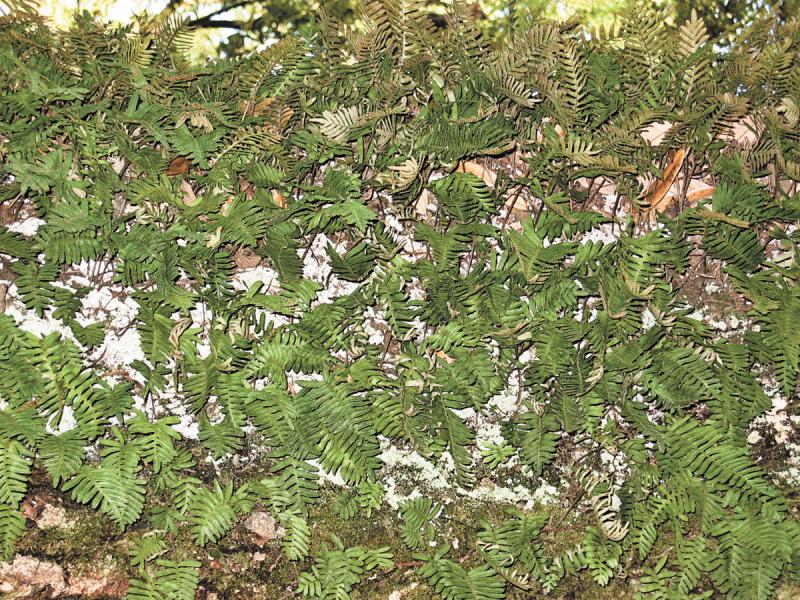Hair salons pride themselves on quirky names, from “Shear Lock Combs” and “Julius Scissor” to the ever-popular “Curl Up and Dye.” There is a plant that does just that, it curls up and dies. But this plant's secret is that it can stay dead for months or even years, and when watered, miraculously come back to life.
The Resurrection Fern (Pleopeltis polypodioides) has been around 400 million years, living side by side with dinosaurs, so it’s also known as "Dinosaur plant."
While most plants can only lose up to 10 percent of their moisture and live, the Resurrection Fern can lose up to 97 percent of its moisture and survive.
When it loses too much water, it shrivels up into a grayish-brown clump of leaves. Once you water it, it will flatten out its leathery. green leaves into a rosette and rapidly become green within 24 hours.
The green leaves are usually from four to 12 inches long. This native North American fern can be found in the wild from Florida to New York and west to Texas. Because it can withstand droughts lasting several years, it is found in a variety of habitats. Experts say it could theoretically live 100 years in its dormant state, and still come back to life when watered.
It only needs one thing: a host. Resurrection ferns are epiphytes, which are plants that grow on top of other plants. Epiphytes are not parasites. As an epiphyte or air plant, the Resurrection fern gets its nutrients from the air and from the nutrients that are rinsed by rainwater from the tree's bark. In the wild, Resurrection ferns grow in the crotches or branches of large trees, and can even grow into dense carpets of ferns on shady limbs. It will also grow on rock surfaces or on the forest floor, on top of stumps and dead logs. In the South, it often grows alongside other epiphytic plants such as Spanish moss.
As the Resurrection fern’s leaves dry, the plant produces dehydrins, which allow the cell walls to fold in a way that they are then able to unfold later without any damage.
Resurrection ferns reproduce from tiny dust-like spores on the bottom of their fronds. The home gardener might find it easiest to simply divide the underground rhizome sections and root them for new plants.
As an indoor plant, the Resurrection Fern makes the ultimate can't-kill houseplant. Think of it: if you forget to water it even for months, you will be able to revive it in just 24 hours simply by pouring water on it.
About the only thing hard about growing the Resurrection or Dinosaur fern is finding it for sale. If your local garden center or nursery doesn't have it, you can order from specialty greenhouses such as Logee's Greenhouse (www.logees.com, 800-774-8038).
The last dinosaur breathed 245 million years ago, but you can grow a plant that knew enough to curl up and die, and therefore live. And that, as they say in the hair-cutting business, is “Shear Madness.”





















































